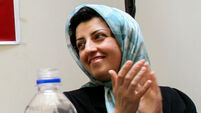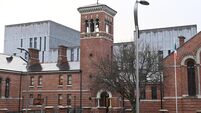Accused ‘not a classic paedophile’
Dutroux, 47, went on trial yesterday for a string of abductions, rapes and murders of girls leading up to his arrest in August 1996.
Four of the girls, including two eight-year-olds, were murdered. Two others were rescued from the cellar of a property belonging to the jobless electrician near the southern town of Charleroi.
The public’s shock turned to fury when it emerged not only that police had missed a string of clues that could have led to Dutroux being apprehended earlier, but that he had been released from jail in 1992 after serving just three years of a 13-year sentence for the abduction and rape of five girls.
His own mother wrote to the prison director to warn about her son. She complained Dutroux was using supervised visits to his grandmother’s house to write up an inventory of the elderly woman’s possessions, leaving her anxious and distressed. “I have known for a long time and with good cause my eldest’s temperament,” she wrote.
According to the French newspaper Liberation, the letters went unanswered.
That Dutroux was a sexual predator is not in doubt. But whether he was acting on behalf of a broader paedophile network is the burning question for many Belgians.
Yet, according to a report issued by a panel of psychiatrists who analysed him after his arrest, Dutroux does not fit the classic profile of a paedophile.
Two of his female victims, whose bodies were unearthed a fortnight after his arrest, were aged 17 and 19 when they disappeared the year before.
“The age of the victims did not seem to arouse in him any given effect or to play a particular role, beyond allowing him to kidnap them, to manipulate them, to confine them,” the experts wrote.
Sabine Dardenne, who was 12 when she was rescued from the Charleroi cellar, broke her silence last year in newspaper interviews to describe how Dutroux managed to persuade her that he was protecting her from some greater harm. But if she disobeyed him, Dardenne said, Dutroux threatened to “hand me over to some gang or other that he knew, and that the person he’d give me to would torture me and kill me after making me suffer”.
What produced this ‘monster’? There are clues in his troubled upbringing, but no clear explanation for Dutroux’s descent into a career of rape and alleged murder that cast him as Belgium’s most hated man.
He was born on November 6, 1956, in central Brussels, the eldest of five children, to teacher parents who he says frequently beat him. But there is no suggestion of sexual abuse.
After his parents split up in 1971, Dutroux left home. According to press reports, he became a homosexual prostitute at the age of 18. But in the same year, Dutroux married for the first time. That woman and a string of mistresses describe him as a charmer but also a manipulator with a propensity to control weaker-willed people.
One of his mistresses was Michelle Martin, who went on to become his second wife and will stand trial alongside Dutroux next week, along with two other alleged accomplices.
In 1979, Dutroux received the first of a series of convictions for theft, violent muggings, drug-dealing and trading in stolen cars.
In 1986 Dutroux and Martin were arrested for the abductions and rape of five girls, which led to his lengthy jail term of 1989.
Released in 1992 under a government scheme that was supposed to keep a close eye on sexual offenders in the community, Dutroux did not register again on official radars until four years later. By that time, four girls and an accomplice were dead, and another two girls had suffered an ordeal that will scar them for life.













